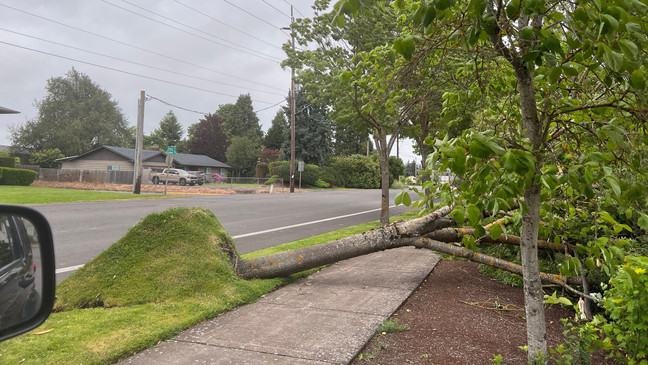Global Forest Destruction: Wildfires Push Losses To Unprecedented Levels

Table of Contents
The Devastating Impact of Wildfires on Global Forests
Recent wildfires have ravaged vast swathes of forest across the globe, leaving behind a trail of destruction and ecological devastation. From the Amazon rainforest to Australia's bushland, Siberia's boreal forests, and California's iconic redwoods, the scale of the damage is staggering. These fires are not isolated incidents; they represent a significant escalation in the ongoing crisis of global forest destruction.
-
Quantifiable Loss: The World Wildlife Fund (WWF) estimates that millions of hectares of forest were lost in 2023 alone, with particularly severe impacts in regions like the Amazon, where deforestation and wildfires combined resulted in a significant loss of irreplaceable biodiversity. NASA satellite data provides further evidence of this alarming trend, documenting the extent of forest loss in both area and volume.
-
Biodiversity Collapse: Wildfires decimate biodiversity, driving numerous plant and animal species towards extinction. Endangered species like the orangutan in Borneo and the koala in Australia are particularly vulnerable, facing habitat loss and increased mortality due to wildfires. The destruction of critical habitats has far-reaching and long-lasting consequences for the delicate balance of ecosystems.
-
Climate Change Exacerbation: Forests play a vital role in carbon sequestration, absorbing atmospheric CO2. Wildfires release massive amounts of stored carbon back into the atmosphere, exacerbating climate change and creating a dangerous feedback loop. This increased atmospheric carbon dioxide further contributes to rising global temperatures, creating drier conditions that increase the risk and severity of future wildfires, intensifying the cycle of global forest destruction.
Underlying Causes of Increased Wildfire Severity and Global Forest Destruction
The increased frequency and intensity of wildfires are driven by a complex interplay of factors, many of which are exacerbated by human activities.
-
Climate Change: Rising global temperatures, prolonged droughts, and altered precipitation patterns create the perfect conditions for devastating wildfires. Longer, hotter summers, combined with reduced rainfall, result in drier vegetation, which acts as readily available fuel for fires.
-
Deforestation and Unsustainable Logging: Unsustainable logging practices leave forests fragmented and vulnerable. The removal of trees reduces the natural barriers to fire spread and increases the amount of dry underbrush, making forests more susceptible to ignition and rapid fire spread.
-
Poor Forest Management: Lack of preventative measures such as controlled burns, which help reduce the accumulation of flammable material, contributes to the severity of wildfires. Inadequate forest management and insufficient resources dedicated to wildfire prevention and suppression exacerbate the problem.
-
Human Activities: Human activities, both accidental (e.g., discarded cigarettes, power lines) and intentional (e.g., arson), are significant ignition sources, contributing to the start and spread of devastating wildfires, further driving global forest destruction.
The Role of Climate Change in Global Forest Destruction
Climate change is not merely a contributing factor; it's a primary driver of the increased severity and frequency of wildfires. Scientific data overwhelmingly supports this conclusion.
-
Increased Flammability: Rising temperatures and decreased rainfall create significantly drier and more flammable conditions in forests worldwide. This makes vegetation more susceptible to ignition and allows fires to spread rapidly and intensely.
-
Altered Wind Patterns: Changes in wind patterns, often linked to climate change, influence the speed and direction of wildfire spread, making containment efforts more challenging and increasing the area affected by fires.
-
Carbon Feedback Loop: Wildfires release massive amounts of carbon dioxide into the atmosphere, further contributing to global warming. This creates a dangerous feedback loop, accelerating the cycle of climate change and increasing the risk and intensity of future wildfires – a critical element driving global forest destruction.
Economic and Social Consequences of Global Forest Destruction
The consequences of global forest destruction extend far beyond environmental damage. The economic and social impacts are profound and far-reaching.
-
Economic Losses: The loss of forests translates into substantial economic losses across various sectors. Timber production, tourism, and other forest-related industries suffer significant setbacks, impacting local economies and livelihoods.
-
Displacement and Loss of Homes: Wildfires displace communities, destroy homes, and disrupt livelihoods, forcing people to relocate and rebuild their lives, adding to the human cost of global forest destruction.
-
Health Impacts: Smoke inhalation from wildfires poses serious health risks, leading to respiratory illnesses, cardiovascular problems, and other health complications, placing a significant strain on healthcare systems.
Conservation Efforts and Mitigation Strategies
Combating global forest destruction requires a multi-pronged approach encompassing various conservation efforts and mitigation strategies.
-
International Collaboration: International agreements and collaborations are crucial for coordinating efforts, sharing resources, and implementing effective conservation strategies across borders.
-
Improved Forest Management: Sustainable logging practices, controlled burns (where appropriate), and effective fire suppression techniques are vital for reducing the vulnerability of forests to wildfires.
-
Reforestation and Afforestation: Planting trees in deforested areas and establishing new forests (afforestation) helps restore ecosystems, sequester carbon, and reduce the risk of future wildfires, combatting global forest destruction.
-
Technological Advancements: Technological advancements in wildfire detection (e.g., satellite monitoring) and suppression (e.g., drones, improved firefighting equipment) are critical for improving response times and mitigating damage.
-
Community Involvement: Community-based forest management programs empower local communities to actively participate in forest protection and sustainable resource management, leading to more effective conservation efforts.
Conclusion
Wildfires are pushing global forest destruction to unprecedented levels, with devastating consequences for biodiversity, climate change, and human well-being. The underlying causes are complex, involving climate change, unsustainable practices, and poor forest management. The economic and social costs are substantial, impacting livelihoods, health, and displacement. However, through international collaboration, improved forest management, reforestation initiatives, technological advancements, and active community participation, we can effectively mitigate the impacts of wildfires and combat global forest destruction. The fight against global forest destruction requires immediate and collective action. Learn more about how you can contribute to protecting our forests and mitigating the impacts of wildfires. Support organizations dedicated to forest conservation, advocate for stronger environmental policies, reduce your carbon footprint, and educate others about the urgent need to protect our planet's precious forests.

Featured Posts
-
 Fashion Heritage Ballet And Pun Tastic Weekend Events
May 23, 2025
Fashion Heritage Ballet And Pun Tastic Weekend Events
May 23, 2025 -
 Are Memorial Day Gas Prices The Lowest In Decades
May 23, 2025
Are Memorial Day Gas Prices The Lowest In Decades
May 23, 2025 -
 Why Eric Andre Didnt Cast Kieran Culkin Behind The Scenes Of A Real Pain
May 23, 2025
Why Eric Andre Didnt Cast Kieran Culkin Behind The Scenes Of A Real Pain
May 23, 2025 -
 Navigating Big Rig Rock Report 3 12 Key Concepts In Rock 101
May 23, 2025
Navigating Big Rig Rock Report 3 12 Key Concepts In Rock 101
May 23, 2025 -
 Disney To Air Documentary On Freddie Flintoffs Near Fatal Crash
May 23, 2025
Disney To Air Documentary On Freddie Flintoffs Near Fatal Crash
May 23, 2025
Latest Posts
-
 Memorial Day Weekend Weather Forecast For New York City
May 23, 2025
Memorial Day Weekend Weather Forecast For New York City
May 23, 2025 -
 What Date Is Memorial Day In 2025 Planning Your Three Day Weekend
May 23, 2025
What Date Is Memorial Day In 2025 Planning Your Three Day Weekend
May 23, 2025 -
 Nyc Memorial Day Weekend Weather Will It Rain
May 23, 2025
Nyc Memorial Day Weekend Weather Will It Rain
May 23, 2025 -
 When Is Memorial Day 2025 Your Guide To The May Holiday Weekend
May 23, 2025
When Is Memorial Day 2025 Your Guide To The May Holiday Weekend
May 23, 2025 -
 Analyzing Stitchpossibles Weekend Forecasting A Record Breaking 2025 Box Office Event
May 23, 2025
Analyzing Stitchpossibles Weekend Forecasting A Record Breaking 2025 Box Office Event
May 23, 2025
